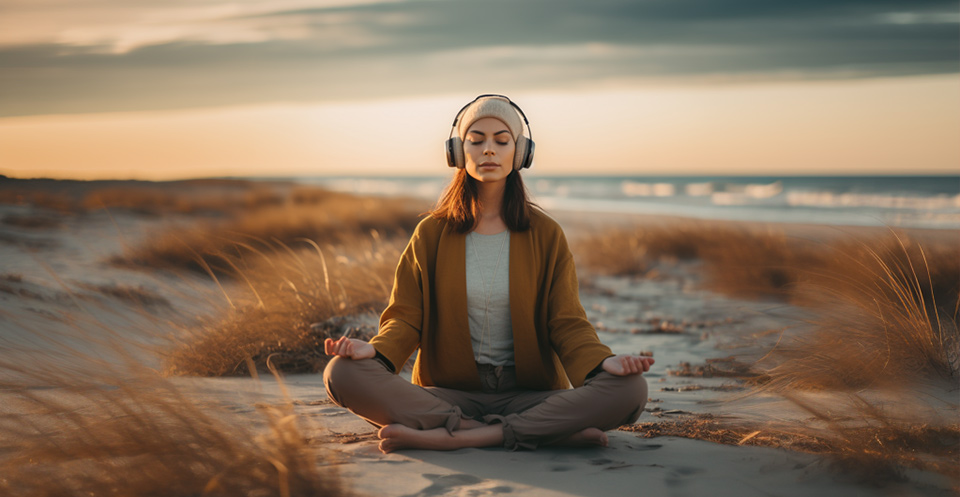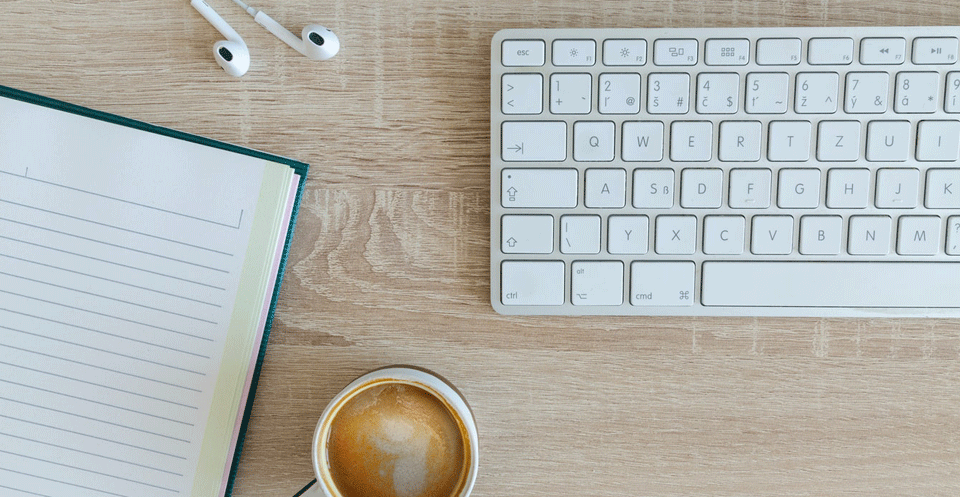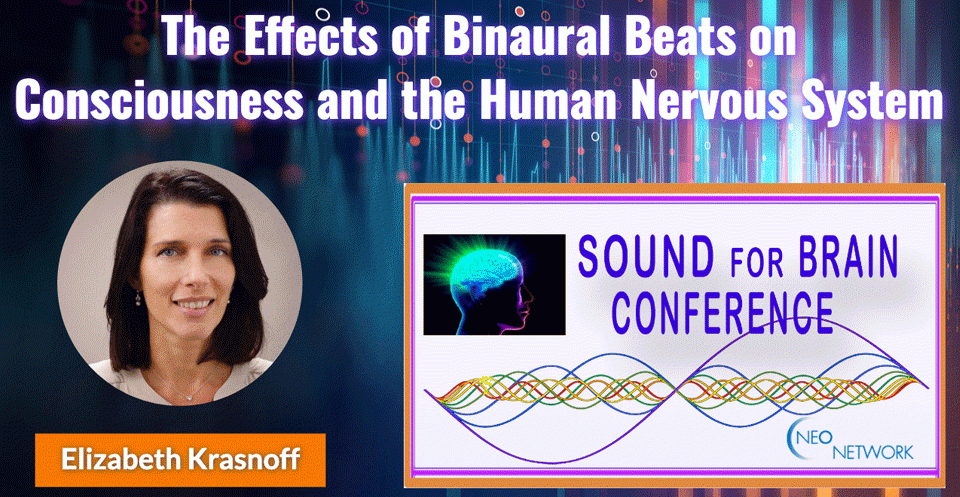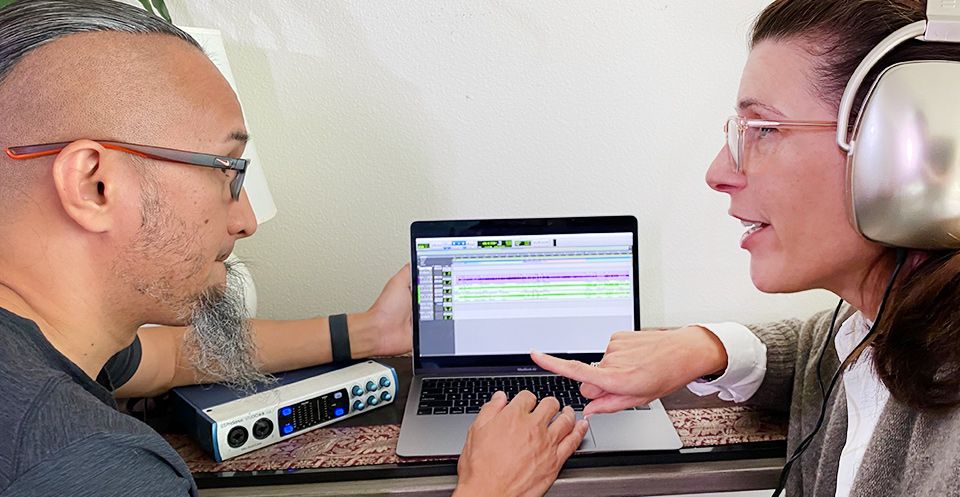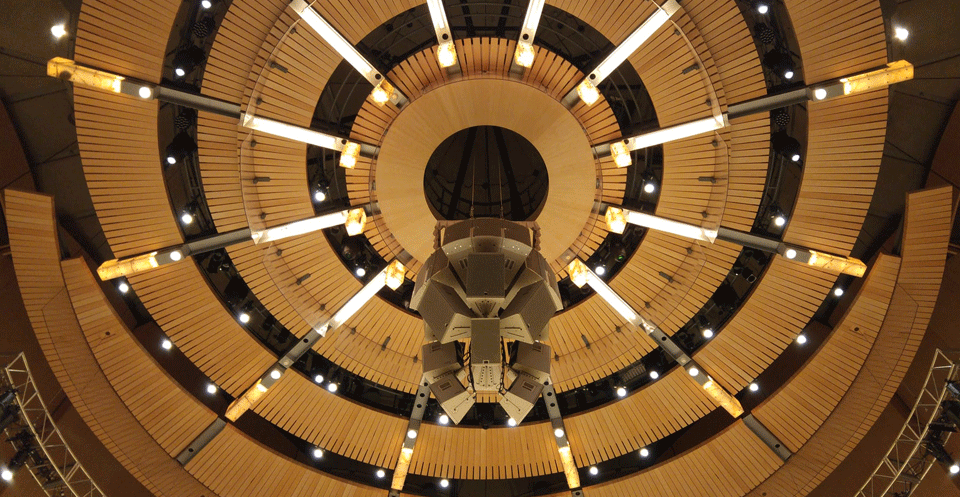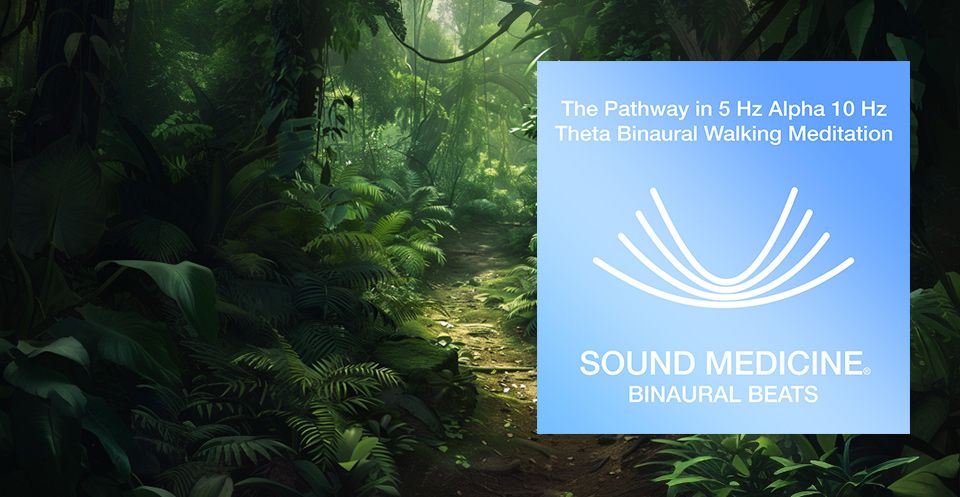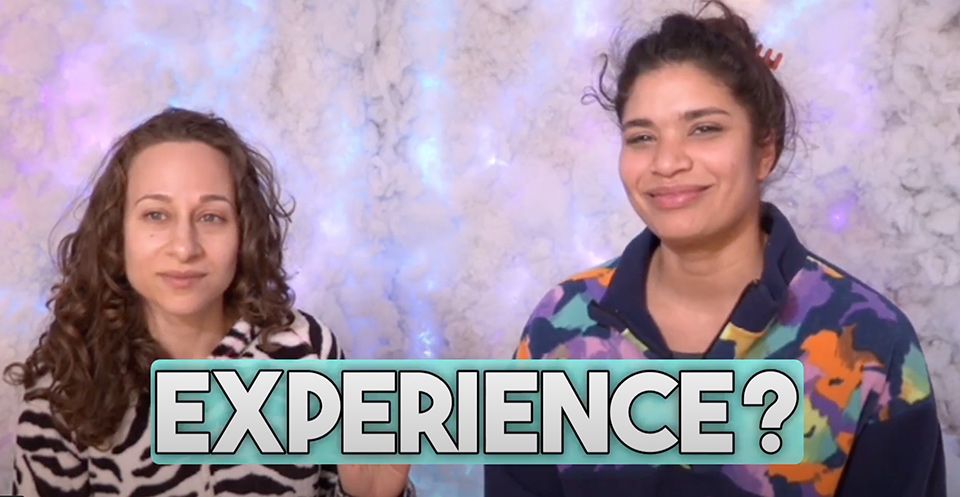Enhance Your Meditation Practice With Binaural Beats-SF Yoga Mag
by Elizabeth W. Krasnoff, PhD
Stress is a challenging condition that most people experience at some point during their lives. People feel overwhelmed by media stimulation and information overload. They crave a drug-free form of relaxation that they can experience at will without even leaving their room. There are various ways to cope with stress and one of them is to learn how to meditate (Kaushik et al., 2020). Another is to use sound technology to change your brainwaves and feel calmer (Gantt et al., 2017). New research shows that binaural beats (BB) sound technology can safely be used in combination with meditation to alleviate stress (On et al., 2013).
How does it work? Binaural beats (BB) are a sound technology that enhance brainwaves in response to sound. A binaural beat is an auditory stimulus which is used with the intention to make brainwaves follow a sound frequency (On et al., 2013). You need stereo headphones to listen to BB since the beats consist of two slightly different sound frequencies, one in each ear. The brain responds to the difference between the two sound frequencies that it hears by producing a third “illusory sound.” After about ten minutes the brain is shown to harmonize with the third sound and produce brainwave states (Garcia-Argibay et al., 2019). If your intention is meditation, you should be looking for BB that include alpha and theta brainwaves (Kaushik et al., 2020).
What are alpha and theta brainwave states? Alpha brain waves, also called alpha brainwave states, operate at a frequency of 8-12 Hz. You are likely to feel very relaxed and passive while in alpha (Kaushik et al., 2020).. Thetabrainwaves are associated with trance states and also with meditation (Puzi et al., 2013). Since both states are conducive to meditation, you can enrich your daily/weekly meditation practice by listening to BB in alpha and theta sound frequencies.
How can we detect changes in brainwaves that occur with meditation? Brain waves are the pattern of electrical activity or activities that occur in the brain. Brain wave patterns constantly respond to information from outside (and inside) the body, including sound and visual effects. EEG analysis is one of the best ways to measure them. Theta brain waves oscillate in theta rhythm, a brain wave pattern of 4-9 Hz. Theta brain waves can be recorded using electroencephalogram (EEG) by attaching EEG electrodes to the scalp (Puzi et al., 2013). Studies using EEG showed that meditators experience a decrease in stress and increased tranquility after meditation (Kaushik et al., 2020). BB can be used to increase theta brainwave activity for a calm mood (On et al., 2013).
Scientific measurements show us that the brain is in a predominantly alpha and theta states during meditation (Puzi et al., 2013). Those same EEG measurements show that we can enhance these brainwave states with technologies like BB (Puzi et al., 2013). Your intention to meditate is supported when you stimulate alpha theta waves through BB sound delivered to the ears by headphones.
Research supports the benefits of meditation, and of BB. A study of a new technology combining BB with meditation technology for treating anxiety showed that the treatment had a positive effect (Yusim & Grigaitis, 2020).Other research showed that there was a relationship between meditation and BB when EEG was used to measure brainwaves during the meditation state (Yamsa-Ard & Wongsawat, 2014). One research study showed that when study participants practiced a specific type of meditation called yoga nidra for at least 40 days, their brains changed to alpha as the dominant brain state (Kaushik et al., 2020). Alpha state is associated with relaxed and happy mental states. The change to a predominantly alpha state had positive effects on participants’ quality of life. Participants reported better sleep, less anxiety and depression, lower stress, and better learning and memory (Kaushik et al., 2020).
Clinical research shows that you may experience alpha and theta brainwave states while in meditation (Puzi et al., 2013). You can add to this effect by listening to alpha and theta BB during meditation practice. Since BB are played silently beneath music, choose music that you like. The music will put you in a relaxed state, so choose music that works for you personally. Since BB work by playing a different tone in each ear, you must use headphones or earbuds (but not while driving please!). Over-the-ear headphones are best since they provide you with a fuller frequency sound.
Always listen to BB for at least ten minutes. It takes at least that long for brain neurons to start following in response to BB. I also prefer to use BB from research based binaural beats companies, rather than BB of unknown origin that are flooding Youtube, Spotify and other channels.
Stay tuned to future issues of this column, where we will show you how to use BB for sleep, mental focus, and intimacy.
Visit Elizabeth at www.sound-medicine.com. Sign up for the newsletter and receive a free binaural beats creativity track. For the full immersive Sound Medicine® experience, download our app and receive a free two-week trial.
References
Gantt, M. A., Dadds, S., Burns, D. S., Glaser, D., & Moore, A. D. (2017). The effect of binaural beat technology on the cardiovascular stress response in military service members with postdeployment stress. Journal of Nursing Scholarship, 49(4), 411–420. https://doi.org/10.1111/jnu.12304.
Garcia-Argibay, M., Santed, M. A., & Reales, J. M. (2019). Efficacy of binaural auditory beats in cognition, anxiety, and pain perception: A meta-analysis.
Psychological Research, 83(2), 357–372. https://doi.org/10.1007/s00426-018-1066-8.
Kaushik, M., Jain, A., Agarwal, P., Joshi, S. D., & Parvez, S. (2020). Role of yoga and meditation as complimentary therapeutic regime for stress-related neuropsychiatric disorders: Utilization of brain waves activity as novel tool. Journal of Evidence-Based Integrative Medicine, 25, 2515690X20949451. https://doi.org/10.1177/2515690X20949451.
On, F. R., Jailani, R., Norhazman, H., & Zaini, N. M. (2013, March). Binaural beat effect on brainwaves based on EEG. In 2013 IEEE 9th International Colloquium on Signal Processing and its Applications (pp. 339-343). IEEE. doi: 10.1109/CSPA.2013.6530068.
Puzi, N. M., Jailani, R., Norhazman, H., & Zaini, N. M. (2013, March). Alpha and Beta brainwave characteristics to binaural beat treatment. In 2013 IEEE 9th International Colloquium on Signal Processing and its Applications (pp. 344-348). IEEE. doi: 10.1109/CSPA.2013.6530069.
Yamsa-Ard, T., & Wongsawat, Y. (2014, November). The relationship between EEG and binaural beat stimulation in meditation. In The 7th 2014 Biomedical Engineering International Conference (pp. 1-4). IEEE. doi: 10.1109/BMEiCON.2014.7017405.
Yusim, A., & Grigaitis, J. (2020). Efficacy of binaural beat meditation technology for treating anxiety symptoms: A pilot study. The Journal of Nervous and Mental Disease, 208(2), 155-160. DOI: 10.1097/NMD.0000000000001070.
